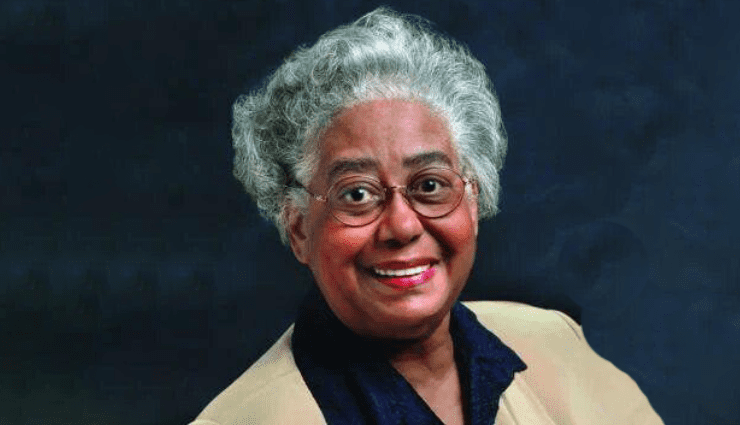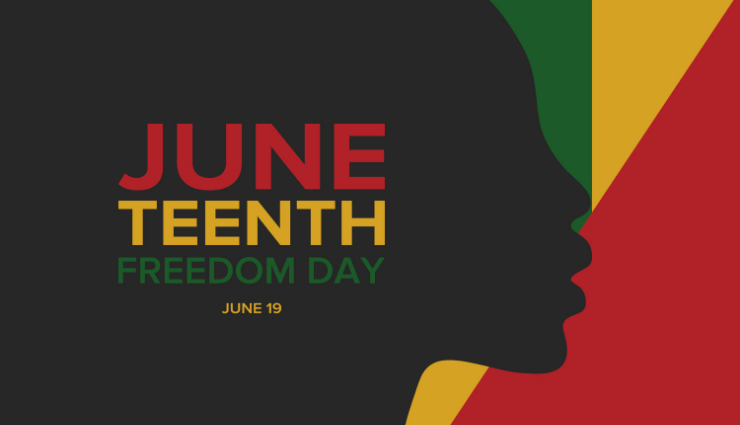Speaking of Speaking

Poet Robert Frost, in his curmudgeonly fashion, once quipped, “Half the world is composed of people who have something to say and can’t — and the other half who have nothing to say and keep on saying it.”
In the form of a backhanded slap, Frost’s hyperbolic put-down was a plea for the improvement in the quality of human communications, particularly writing. But if Frost was around today he’d no doubt be aware that “those who have nothing to say and keep on saying it” are doing so in increasing volume and with greater attention in video format on social media — along with people who actually do have something to say and are saying it fairly well. Our communications have always been a mix of the spoken and written word, but public speaking and oral presentations are an increasingly popular — and, therefore, valued — form of communication these days.
A good example is the remarkable rise in TED Talks —those short, informative, oral presentations on a minimalist stage that are broadcast online. The first TED Talk was posted in 2006. Since then, the audience has been growing rapidly. Today, more than 1 billion people have viewed a TED Talk, with more than 1.5 million people watching every day. No doubt these numbers will increase in the coming years. The current most popular TED Talk is Sir Ken Robinson’s “Do Schools Kill Creativity?” It has been viewed by more than 54 million people and counting. Transcripts are available in 62 languages. Following close on Sir Ken’s heels is the TED presentation by social psychologist Amy Cuddy on “Your Body Language May Shape Who You Are” — 50 million viewers, 51 languages. The 24th most popular, and one of my favorites, is Novelist Chimamanda Ngozi Adichie’s “The Danger of a Single Story,” which has had more than 16 million viewers to date.
Robert Frost, winner of four Pulitzer Prizes and one of America’s most popular and world-renowned poets, will likely remain more famous than Sir Ken Robinson or Amy Cuddy or Chimamanda Ngozi Adichie, but he never had audiences of this magnitude.
At the same time, we also know that more Americans, around 60% and climbing, get most or part of their news online, much of it in video format. The number of us who actually read news is declining. According to the Pew Research Center, the percentage of adults getting their news from newspapers — from reading — dropped to 18% as of 2017.
There’s plenty of us still writing and reading, but writing and reading are clearly melding into a crowded intellectual space also shared by speakers, videographers, graphic artists, and others who are connecting with the world on matters large and small. Trends also suggest that oral presentations will only be more dominant in the future.
As a result, public speaking is seen as an increasingly valuable skill for life and work. The problem, however, is that oral communications skills, ironically, are being undermined by smartphone technology that is reducing our face-to-face interaction. By spending so much time staring at phones and living within various Internet bubbles, people are becoming less skilled in basic conversation and in presenting ideas in group settings. A parallel problem is that oral communication, public speaking, is not a skill widely taught in schools today.
In a survey released last August, executives and hiring managers said that good oral communication is the skill they most want from job candidates. They rank it higher than teamwork, critical thinking, and ethical decision-making. It’s also the one skill they find in short supply. According to Education Week writer Catherine Gewertz, “Employers say they have trouble finding new hires with good oral-communication skills. But relatively few regular public K-12 schools explicitly teach those skills, and even fewer teach them with real-world workplace scenarios.”
Public speaking skills are not only valuable for employment, of course. There’s an increasingly clear social and ethical value to having the ability to present one’s ideas in a way that is both respectful and influential. Writer J. Michael Sproule, among others, makes it clear that the role of speech in public settings is increasingly important. “In fact,” he writes, “Americans today seem to have only two real alternatives in coping with the challenges of this era — better speech or sullen silence.”
For many decades now, the English department in schools and colleges and universities has focused primarily on the written word — on students reading in silence and responding to the reading in the form of writing. The only oral elements in the process have been classroom discussions and the lectures of teachers and professors. Occasionally, students are asked or required to give oral presentations. But the shift is now on toward some kind of mix that includes both reading and listening, writing and speaking.
Colleges and universities are starting to offer more courses in public speaking for both work and public life. As yet, there are no formal college major degrees in public speaking. There are, however, an increasing number of colleges and universities offering communications degrees that include a focus on public speaking. Some offer interdisciplinary studies that combine public speaking and writing courses. The University of Oregon, for example, offers a minor in Writing, Public Speaking, and Critical Reason. Five of the related courses are offered through the English department, including Public Speaking, Oral Controversy and Advocacy, and Rhetoric and Ethics.
A New York University course on public speaking describes public speaking as a performance and aims to both familiarize students with the various kinds of presentations, while also helping students develop specific skills. By the end of the course, students should:
- become aware of personal speech habits and characteristics;
- develop increased confidence;
- improve posture, voice, diction, and other mechanics of speech;
- develop speech preparation and presentation techniques, audience awareness, and self-awareness; and
- cultivate poise and self-confidence.
There are also an increasing number of colleges and universities adding a public-speaking component to their core English curriculum. Southern New Hampshire University — one of the cutting-edge universities having success at blending in-person and online education — requires oral presentations in its compulsory writing course for all students. This is in addition to the university’s communications courses, which the university suggests will help students in the job market and more generally in developing the 21st-century skills consider essential for success.
Colleges and universities are also requiring oral communications as part of a larger communications requirement that includes lessons in inquiry, writing, research, oral presentations, information literacy, and collaboration. See, for example, The College of William and Mary’s two core communications courses, designed to “cultivate intellectual growth by emphasizing inquiry (e.g., frame questions, reason, create, solve problems), communication (e.g., write, speak, visualize, perform), and collaboration.”
Some colleges have even set up oral communications support centers similar to the classic writing center designed to help students with their presentation skills.
Meanwhile, many university English departments are undergoing changes of late, partly in response to the declining number of students signing up for the major and partly to respond the needs of the world. The changes include the study of literature from a more diverse group of writers, familiarizing students with various forms of literacy, and considering the intersection of literacy and world of work. Some core traditional texts are being dropping from the syllabi, while a focus on communication for life and career is on the rise. A quick survey of college English departments and you’ll notice this shift.
Spellman College, which has recently revised its English major requirements, has added a public presentation — revising an essay into a speech delivered to a panel of faculty judges. Ohio State University describes its English majors as “persuasive speakers, empathetic listeners, critical readers, and sophisticated writers.” Johns Hopkins University’s English department “aims to improve students’ ability to communicate their ideas about literature in both oral and written forms.” The English Department at Boston College talks about helping students “acquire multiple literacies” and about preparing students for a wide range of existing careers and for “careers that are still emerging.” And so on.
As noted, the pre-collegiate world is still primarily text-based. Most schools ask students to read and respond in writing. Independent schools, in particular, require students to do a significant amount of reading and writing every year. But even here there’s a noticeable shift toward more oral presentations and the teaching of oral communications skills.
A growing number of independent schools are quietly folding oral presentations into their curricula, particular in their English classes. Schools dedicated to discussion-based classes are also working harder, or more consciously, to help students understand how to talk with each other, how to reason, how to present a position orally, how to listen and respond, how to build upon others ideas, and how to support and collaborate.
Here are a few examples:
- The Berkeley Carroll School (New York) requires some form of public speaking at every grade level. The school does so because it believes “the ability to speak before a group with confidence and clarity is an important 21st-century skill, essential for global citizenship.” In the middle school, students in every grade complete a final project where they create and present a project to the public.
- The Hyde School (Maine) requires all seniors to take a formal public speaking course, taught by the school’s founder, Joe Gauld.
- Tenacre Country Day School (Massachusetts) engages students in public speaking starting in pre-K and continues every year. The goal is not only to help students feel comfortable speaking in public — knowing that, at some point, all of us will need to make some sort of public presentation — but also so that they can develop the skills of engaging effectively with an audience.
- The Fay School (Massachusetts) also starts students early, helping elementary school students craft speeches to share with their families and the school community. In the upper school, students also take part in the annual speech contest. The goal, the school says, is to provide “tools that they’ll use for a lifetime: the ability to craft an argument, speak persuasively, and share opinions about topics that matter.”
- The Country School (Connecticut) has made public speaking one of its Signature Program. “Providing our students constant opportunities to speak publicly,” the school says, “teaches them to convey their ideas concisely and effectively, prepares them for interviews for secondary school, college, and beyond, and allows them to make a difference in the classroom, their community, career, and life.”
- At Almaden Country Day School (California), every middle school student must take Speech 1, which introduces the fundamentals of public speaking. Students learn to research and write a speech, utilize elements of non-verbal communication, and fundamental delivery skills. Students are regularly practicing their public speaking skills, whether it is by facilitating a literature discussion, debating in history class, or leading a tour for a new family.
- Greenwich Academy (Connecticut) combines leadership and public speaking in one program. This program starts in the lower school and continues every year through the upper school years. The academy’s upper school classrooms are built around the premise that students learn the most when they’re engaged in the conversation. In the larger community, public speaking is design to help students “lead with clarity, spirit, and intelligence.”
- The independent schools in Canada hold a popular annual public speaking event open to schools from across the world as a way to support and encourage the development of presentation skills.
The above examples are just a small sampling of this growing focus on oral communications. I’m sure I’ve left out some excellent examples. I mostly want to underscore what I see as a quiet but interesting curricular shift in independent schools. The more I talk with independent school educators about the topic, the more I hear about the growing opportunities for students to speak publicly, to organize and present their thoughts, to argue and debate, to offer insight and perspective, or even to recite their poetry or read their carefully constructed essays on a stage.
The challenge is for schools to figure out how much time and effort should be dedicated to public speaking and, of course, how to fit it into an already seam-bursting curriculum. Given that most teachers were not trained to teach public speaking, and probably weren’t taught it themselves, schools also need to consider the question of professional development. Of course, no teacher I spoke with about this topic thought that public speaking will ever replace reading and writing in schools. Written communication skills are not only still vital, they may be more vital than ever. Public speaking is simply another form of literacy that schools feel students need to develop for college, community life, and career in our current world.
Michael Brosnan is an independent writer and editor with a particular interest in education and social change. His latest book of poetry, “The Sovereignty of the Accidental,” was published by Harbor Mountain Press. He can be reached at michaelbrosnan54@gmail.com.








